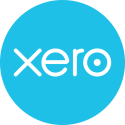Creating the Right Price Strategy to Improve Cash Flow For Small Business Owners
By: Shay James

You created your business for a reason. You have a passion for something, and you knew it was where you wanted to spend your time and energy. At the end of the day, though, it is a business, and knowing how to improve cash flow is essential to keep things going and running smoothly.
This is why understanding price strategy is so important. When you have a firm grasp of the different price strategies for business, you can determine which combination will work best for your situation. And you’ll be able to optimize your small business pricing strategy to manage your cash flow so you don’t find yourself short on funds.
Creating the right price strategy to properly manage your cash flow is an ongoing process. As your business grows and changes, so will your strategy. It’s important to stay fluid and be ready to shift gears on your strategy when you need to.
Reasons You May Need to Change Your Prices
As a growing creative agency, almost all of the financial aspects of your business will evolve and your price strategy is certainly no exception. There are many reasons why your price strategy may need some updating.
Your expenses have changed (you brought on additional staff, you updated your technology, your material costs have increased, etc.)
The economy is experiencing a time of heightened inflation
Your competition has increased their prices
You’re performing a mid-year or end-of-year financial check-up and want to include your price strategy in your review
4 Common Price Strategies
Getting started with figuring out which price strategy is right for you can be overwhelming. There are several models, and all of them have benefits for small businesses. You may need to experiment to find the ones that work best for you when it comes to improving cash flow.
Let’s take a look at four pricing strategies and how they can be used to effectively provide a consistent cash flow to your small business:
1. Competitive Pricing
It’s unlikely you are the only business in your industry. There is always competition. Other companies offer the same goods or services you do, and checking out their pricing model can be an excellent place to start when first setting up your small business pricing strategy. This research can help you not only know where to start but also where you could grow.
The fewer competitors you have, the more of a premium you can charge because your offerings are rare and specialized for your customers. But even if there is a lot of competition in your industry, you can still use your competitors’ pricing and packages to design your price strategy for business. Find the gaps in what they are offering and use your business to fill those gaps. This will position you as the solution for your clients.
Remember to continually check your competitor’s prices to make sure you’re still within the range for your industry - you don’t want everyone else getting a pay raise while you’re stuck with your original prices. You may also only need to change or lower prices on a few of your services or products, not all of them.
Most consumers check prices with multiple companies before making a purchasing decision. Pricing your services and goods just slightly below the market average could give you a competitive edge. If you are priced slightly above the average, be sure to market the advantages you bring - such as experience, technology, convenience, etc., - to make up for the increased cost.
2. Value Pricing
When you’re looking for ways to improve cash flow, one key area to examine is the value of your product or service. What do you bring to your clients? What problems do you solve for them? Value-based pricing covers all of this and relies on the customer’s understanding of the value of your product or service.
Value-based pricing takes into account the entire buying process and the experience that the client will have. It isn’t limited to the product or service itself but includes the benefits to the client including convenience and quality. When you consider value as a small business pricing strategy, you are considering the big picture.
Creative agencies have an advantage over traditional commodity-based businesses when it comes to value-based pricing because they offer unique and varied services. How much time and effort are you saving your clients? How can you customize and expand your services to increase value for your specific clients?
Effectively using value-based pricing requires you to know your customers extremely well and on a personal level. The payoff can be significant for both you and your clients.
3. Penetration Pricing
One of the challenges businesses face is gathering traction in their industry. Penetration pricing is a great strategy for addressing this hurdle. With this strategy, you offer a discounted price that gets people interested and encourages them to buy. Once they know the value of your product or service, they will likely return to purchase more and will be willing to pay a higher price.
For this to be a successful small business pricing strategy, you need to have confidence that the product or service will do well and will generate enough interest to offset the potential losses of pricing it low. In the end, you want to make sure you sell enough units to make up for the lower profit margin.
You also need to retain happy customers. You’ve enticed them with a sale or free introductory service, now you need to maintain their satisfaction and loyalty through quality customer service and products or services.
4. Cost Pricing
Cost pricing is one of the simplest price strategies for business and also the most straightforward. As a business owner, you know what it costs to create your product or the time it takes to deliver your service. Therefore, you know the minimum you would need to charge to turn a profit.
When you are running a price strategy based on the cost model, you add your profit margin to the existing costs. This ensures that you cover the expenses associated with your business while also turning a profit. This model is particularly good for businesses with fixed costs that routinely know what their expenditures will be and can plan accordingly.
Mixing and Matching Price Strategies
A price strategy for business isn’t one size fits all, and it isn’t something you’ll figure out once and have done forever. One of the challenges of figuring out how to improve cash flow is realizing that it is a fluid process - it’s always changing and it requires periodic evaluation.
As your business grows, chances are what worked at first won’t work later on. Or it won’t work as well. So don’t be afraid to experiment with different small business pricing strategies to see what is going to work best for you. You can combine these strategies or start with one and switch to another.
Learning and growing is a key part of doing business and is the only way you’ll be able to move forward. Businesses that do not shift and adapt end up stagnating and may never reach their full potential.
Find The Right Price Strategy For Your Small Business With An Outsourced CFO
Knowing how to improve cash flow by having the right price strategy for business is essential. At Lamplight Advisors, we help creative business owners organize their finances so they can relax and focus on the things they really love about their business. To see if we can help you find the right price strategy to properly manage your cash flow, click here to schedule a conversation today.






